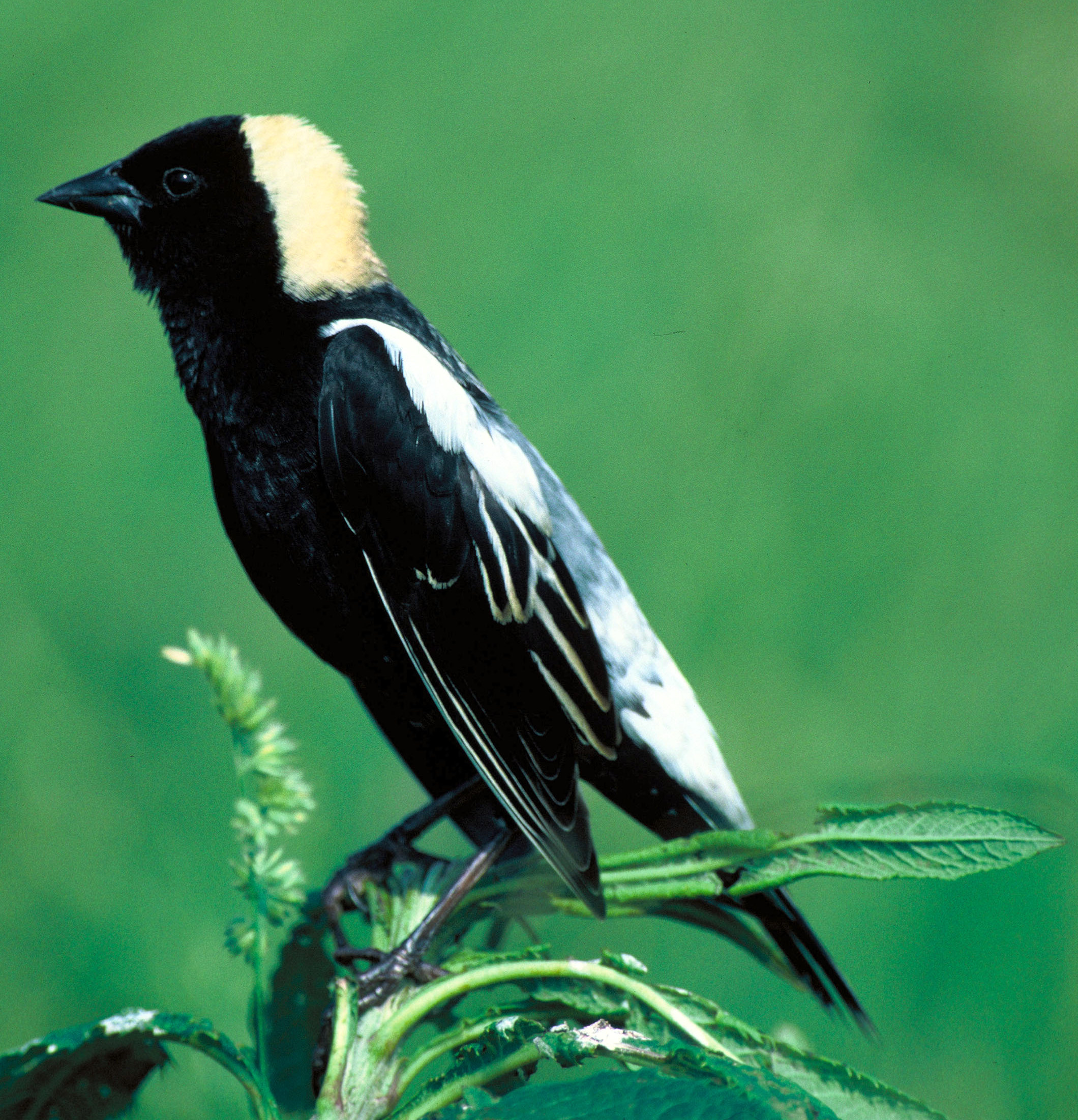The Bobolink is a small songbird that migrates between South America in winter and the Northern and Midwestern sections of the United States in spring and summer. This male of this cheerful species is often described as wearing a tuxedo backwards, due to the contrasting black and white patches of its plumage.
Its song is described as burbling, rambling and exuberant. Unlike many migrating songbirds that breed in North American forests, the Bobolink is a grassland bird that makes its nest in fields, meadows and pastureland. Very little savannah or prairie land still exists in this country these days and any kind of open land, as we all know, is becoming a rarity. As a consequence, habitat for Bobolinks is on the wane and Bobolink populations are in steep decline.
The Champlain Valley and various Vermont river valleys, including the Mad River Valley, contain perfect habitat for Bobolinks. Vermont bird watchers and nature lovers look forward to their annual appearance. As is so often the case a beneficial use of land for humans is at odds with the needs of other species. Bobolinks nest in open hay and farm fields and pastures, but need such areas to remain unmown until mid-summer in order for the breeding cycle to be complete. Working farmers on the other hand, need to plant fields, hay them or use them for grazing starting in early spring.
What can be done to preserve both Vermont’s agricultural heritage as well as our Bobolink population, along with the many other flora and fauna that live in grasslands that also benefit from delayed mowing? Conservationist and retired businessman Michael Sweatman of Elmore, Vermont had an idea. Could publicity, technology and volunteerism be combined in a minimalist fashion that would result in Bobolink awareness and habitat preservation? The Friends of Bobolinks Project is that idea brought to life.
The concept is simple:
- Select a manageable geographic area.
- Use technology to map the open spaces in that area large enough to support Bobolinks.
- Use volunteers to survey each open space a half dozen times over the course of a Spring and Summer to determine whether a field is in agricultural use and if so for what type of agriculture and at what intervals, as well as monitoring those fields for the presence or absence of Bobolinks.
- Educate landowners who are not using their fields for agricultural purposes where Bobolinks are or could be breeding about the potential benefit of deferring any land use activities until after the end of Bobolink breeding season.
In 2013 a Friends of Bobolinks project was launched by Sweatman in the Lamoille Valley which covered 96 square miles of land. A total of 272 fields were surveyed of which 88 were not being mown. Bobolinks were observed in 44 of these fields and through media coverage along with personal contacts, 40 landowners became Friends of Bobolinks, forming a core of a new movement to create awareness and improve Bobolink conservation.
In 2014 the Mad Birders, the valley’s own birding organization is piloting a Friends of Bobolinks project in the Mad River Valley. Join the Mad Birders at 4PM on Saturday April 19, 2014 at the Warren Town Hall to hear Michael Sweatman describe the project and learn how you can be involved. Call Michael Sweatman of the Friends of Bobolinks at 802-253-8142 (cell 371-9025) or Jeanne Elias of the Mad Birders at 496-4730 for more information.
